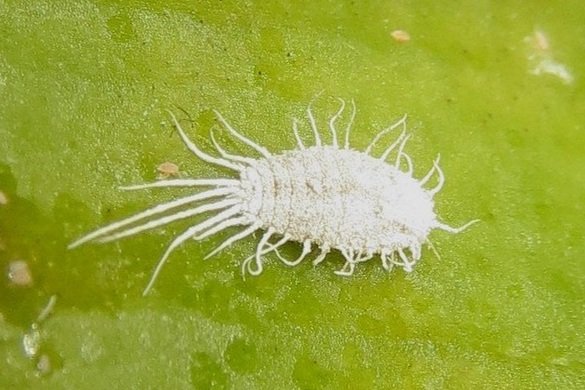Mealybug
MEALYBUG
Now that the weather is warming up it’s really important to check your plants.
Mealybugs are so annoying, especially if you are an avid succulent grower. Let’s have a look at what they are and how to control them. They feed on plants by inserting their mouth onto the plant and sucking up all the nutrients from the sap. They produce large amounts of what is called honeydew, a sticky secretion that ends up as sooty mold.
A macro photo of a mealy bug. This image was originally posted to Flickr by davidshort
What to look for?
White sticky like fluff among the crevices of your plants.
Ants are another sure sign that you may have a problem with mealybug. Ants are known to herd or farm mealybugs for their own benefit. As the mealybugs obtain their food from the plant, they pass some of it onto the ants as a nutritious nectar. In return, the ants protect the mealybugs from predators.
Treatment
There are several methods for treating mealybug, the first is to be vigilant and look out for signs of infestation. If you grow any form of plants then you will eventually end up with this pest and it doesn’t matter where you buy your plants from. There are several natural remedies that work perfectly well. Brushes are a must have tool when dealing with this problem.
METHOD 1: WATER…
Spray the infested area out with jets of water dislodging the pests from the plant.
METHOD 2: DISH WASHING DETERGENT…
Soapy water can be effective for smaller infestations if you don’t have access to any rubbing alcohol or pest spray. Make up using a mild dish washing detergent in rain water or distilled water. Brush out the infected area, and then it’s a good idea to gently wash the plant out with fresh water. A soft spray will also help to dislodge any missed insects.
METHOD 3: RUBBING ALCOHOL…
Isocol is available from your local chemist or supermarket. Always pays to have this on hand if you grow succulents. You can mix it as a spray, but I use it by applying the alcohol directly onto the area with a fine brush to get into the crevices. Clean out, let dry and then flush with a fine spray of water.
METHOD 4: CHEMICALS…
There are several chemical sprays available which are also highly effective. The only problem with using these chemicals is that you are destroying many of the good bugs too. If you see some native parasitic wasps around, lacewings or ladybird beetles than rest assured they are working to keep the mealybug infestation down. The native lady bird beetle (Cryptolaemus montrouzieri) is now commercially available as a mealybug predator. This beetle has actually been exported to other countries where it is known as “Mealybug destroyer”.


